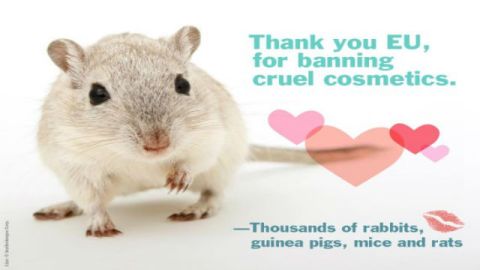The Ban on Animal Testing. Morally Right, Emotionally Appealing, but Dangerous?

We humans like to think we’re pretty smart, that our intellect makes us special, that with enough careful thinking we can figure out just about anything. Cognitive science research has made starkly clear that this assumption is arrogant and false, and a never-ending stream of examples from the real world demonstrate how this hubris can get us in trouble, especially when it comes to figuring out how to deal with things that might put us at risk.
For nearly 50 years, the animal rights movement has gone from the province of a few intellectuals, through a phase of radical extremism, to a more mainstream acceptance of ideas like granting animals certain basic rights, eliminating all research on human-like great apes (several nations ban or severely limit research on chimpanzees, gorillas, bonobos, and orangutans), and drastically reducing the use of toxicological testing on any species. You don’t have to be a radical Vegananarchist to think it’s just wrong to rub a toxic chemical in a caged rabbit’s eye to see if that chemical is safe to put in your shampoo or perfume.
In 2013, with widespread public support, the European Commission banned all testing of potential new cosmetic products or ingredients on animals of any kind. (Other governments have varying restrictions on animal testing, usually focused on testing for non-medical purposes like cosmetics.) For most of the bad things that cosmetics can do to us, like skin or eye irritation from a single application of lipstick or skin cream, that was no problem. Advances in toxicology, many of which had accelerated under pressure to reduce animal testing in general, had already figured out how to test cells in a dish (in vitro) or even to use computer data (what they call in silico testing) to replace in vivo testing on live animals, at least for those more surficial kinds of risks.
But people use lotions and toothpastes and deodorants and perfumes repeatedly. We expose ourselves everyday to hundreds of human-made chemicals, and some of those substances, which also fall under the European ban on animal testing for cosmetics, have the potential to do deeper damage, like cancer, or reproductive damage to the developing fetus. And there are no reliable replacement tests for those serious outcomes.
This now-banned animal testing for the systemic risks from repeated exposure to these everyday products was also a source of important information on the health effects of industrial chemicals generally. Results from cosmetic testing become part of the library of what we know about how industrial chemicals might harm us, no matter what products they’re in.
So the European community has eliminated a way for science to study the risk of industrial chemicals…because it feels right to consider the rights of animals. We have done what feels right, but in the process, without realizing it, we have made it harder to figure out how to keep ourselves safe.
Let me make absolutely clear that I share these feelings. Non-human beings are certainly sensitive to pain and stress (ever had a fish hooked on the end of line, writhing in pain and panic for it’s survival?) and we should find every way possible to reduce how much we expose any animal to suffering when it’s not absolutely necessary for human safety…like drug testing, which Europe still allows. And certainly a greater respect for the non-human beings we share the planet with would encourage us to walk a little lighter in the biosphere on which we all depend, humans included.
But while limitations on animal testing appeal morally, the European ban illustrates how our feelings can sometimes conflict with the scientific process of figuring out how to keep ourselves safe. The ban has put limits on toxicology’s ability to study industrial chemicals that help us enjoy our modern lives, but which also sometimes pose danger.
Toxicology was already developing new non-animal methods to test things, and under the pressure of bans that are spreading world wide, development of new methods to test industrial chemicals – including tests for carcinogenicity and reproductive health damage – are accelerating. Those new non-animal testing methods may, in the long run, turn out to be even more precise than the current system of testing chemicals on animals and then assuming that what happens to the rat or rabbit or dog will also happen in humans. But most of those new methods are a least a decade away from being useful for regulatory decision making.
So we may end up taking two steps forward in the study of the toxic effects of industrial chemicals, but right now we’re taking one step backwards to get there, and that has implications for protecting ourselves while these mew methods are being worked out. Like I said…it’s an interesting example of how humans operate far more on instinct than intellect, and how the arrogant assumption that we’re smarter than we actually are can pose risks all by itself.




